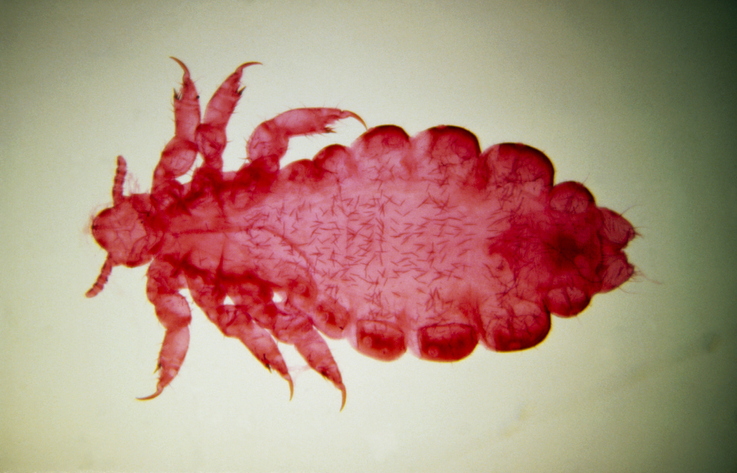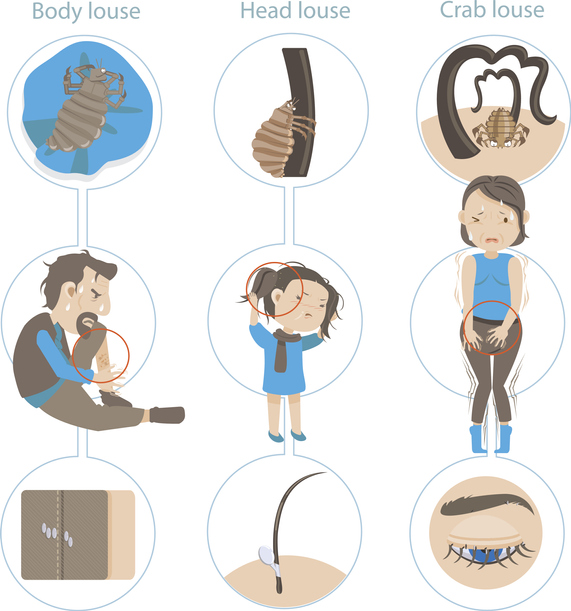Another Reason To Be Proactive About Preventing and Treating Lice – Iron Depletion

Head and body lice are routinely viewed as nothing more than a temporary nuisance. If your child comes home from school, daycare or camp with a note about a lice outbreak or if you find yourself the host of these unwelcome guests, you probably will just purchase an over-the-counter medication, launder clothes and bedding and hope that the story ends there. And, for most people, it does.
But according to the National Institutes of Health (NIH), lice may pose a significant health risk to some people because they feed on human blood. And while the blood loss may be insignificant in a healthy well-nourished individual, in certain individuals, “chronic infestation may cause significant blood loss leading to clinically significant anemia.”
As a result, significant lice infestation should be “considered as a possible cause of iron deficiency anemia in patients with poor hygiene, such as children, homeless patients and psychiatric patients.”
Not having enough iron is called iron-deficiency anemia, which is the most common form of anemia.

Why we need optimal iron levels?
It is very important to ensure that our bodies have the iron it needs to function at its best since blood contains iron. In fact, one of the things iron does in the body is help make red blood cells, which transport oxygen to your body’s other cells. Without enough iron, our organs may not get the oxygen they need to function properly.
Iron is also important for brain health and cognition, and iron deficiency in children may increase the likelihood of their developing ADHD. Some symptoms of iron deficiency include fatigue, shortness of breath, weakness, feeling dizzy or lightheaded, chest pain, headache and cold hands/feet. Others include anxiety, depression or poor concentration.
Lice bites have been associated with anemia
In severe cases, iron deficiency can increase the risk for cardiac arrest, especially if a person is already not in the best of health or physical condition. In fact, according to the National Institutes of Health, iron deficiency is recognized as a comorbidity in heart failure. A tragic example of this recently occurred in the state of Georgia, where a 12-year-old girl died from cardiac arrest. She also had severe anemia, which authorities attributed to repeated lice bites that lowered her blood iron levels, which could have triggered the heart attack. While the girl’s cardiac arrest has not been proven to be directly linked to the lice bites, there have been cases where children with lice infestations have been hospitalized for anemia.
Be Proactive
The first thing you need to do to protect your family from any potential health risks posed by lice is to learn what they are, how to recognize an infestation and what to do about it. Both body lice and head lice are parasites that need human blood to survive. As their name implies, head lice live on the head close to the scalp at the base of hair follicles. They sometimes can be found on the eyelashes and eyebrows. Body lice, contrary to their name, do not live on the body but rather on clothing and bedding. They only move to the body to feed. Both can usually be seen by the naked eye. Intense itching is usually on of the first signs of lice infestation.
Both types of lice are usually passed through direct contact with a person who has lice. Body lice can also be spread through contact with bedding, towels and clothing used by an infested person. While it is possible to also spread head lice through clothing and bedding, direct contact is the primary way they move from person to person (which helps explain why younger children, given their close contact when playing, for example, are more prone to have head lice than adults – in fact, there are an estimated six to 12 million head lice infestations annually in children aged three to 11).
For treating body lice, laundering all clothing and bedding in hot water followed by the “hot” cycle in a drier along with improved personal hygiene is usually adequate. If the infestation persists or if there are extensive sores from the itching, talk with a competent healthcare professional for treatment. With head lice, the usual first treatment is with an over-the-counter shampoo with ingredients that kill the lice and, depending on the product, unhatched eggs. A second treatment for head lice is often recommended as is laundering of clothing and bedding.
The best prevention against body lice is good personal hygiene, including regular bathing and laundering clothes and bedding at least once a week. Also try to avoid having close physical contact or sharing bedding or clothing with anyone who may be infested. With head lice, the best protection is to try to avoid head-to-head contact. This can readily occur during such activities as sleepovers, sports, and outdoor and indoor play. Also don’t share items such as brushes, hats or towels.
In any event, you should also be proactive in making sure your body is getting enough iron and the other nutrients it needs to stay healthy. Keep in mind that there are two types of iron: heme and nonheme. Plant-based sources of iron and iron-fortified foods contain nonheme, whereas meats, seafood and poultry contain both heme and nonheme. Heme iron is generally more bioavailable (absorbed better). However, vitamin C can help with nonheme absorption.
You can find iron in meat, beef liver, chicken, chickpeas, kidney beans, oysters, fortified grains like cereals and breads, beef liver, tofu, dark chocolate, spinach, tomatoes, lentils, tofu, cashews, tuna, turkey, broccoli, raisins and potatoes. Also, make sure you are getting enough iron in your diet. For adults ages 19-50, women generally need 18 mg/day (27 mg during pregnancy and 9 mg when lactating), and men need 8 mg/day. The iron requirement for women ages 51 and up drops to 8 mg. For children, infants need 11 mg/day; toddlers 7 mg/day; children ages four to eight, 10 mg/day; and from nine to 13 years of age, 8 mg/day. Teens need 11mg/day if they are boys and 15 mg/day if girls.
If a nutrient test shows that you are deficient in iron, the treatment is very simple - give iron. Iron tablets are usually the first-line treatment, because they are cheap and easily available. There are many ways to give supplementation with iron if you are deficient, including supplement pills, intravenous drip, fortified water and cooking with iron utensils. If you are vegan or vegetarian, it is extremely important to get proper nutritional advice regarding iron.
Enjoy your Healthy Life!
Disclaimer: This article is not intended to provide medical advice. Please consult with your doctor or another competent healthcare practitioner to get specific medical advice for your situation.
The pH professional health care team includes recognized experts from a variety of health care and related disciplines, including physicians, attorneys, nutritionists, nurses and certified fitness instructors. This team also includes the members of the pH Medical Advisory Board, which constantly monitors all pH programs, products and services. To learn more about the pH Medical Advisory Board, click here.







